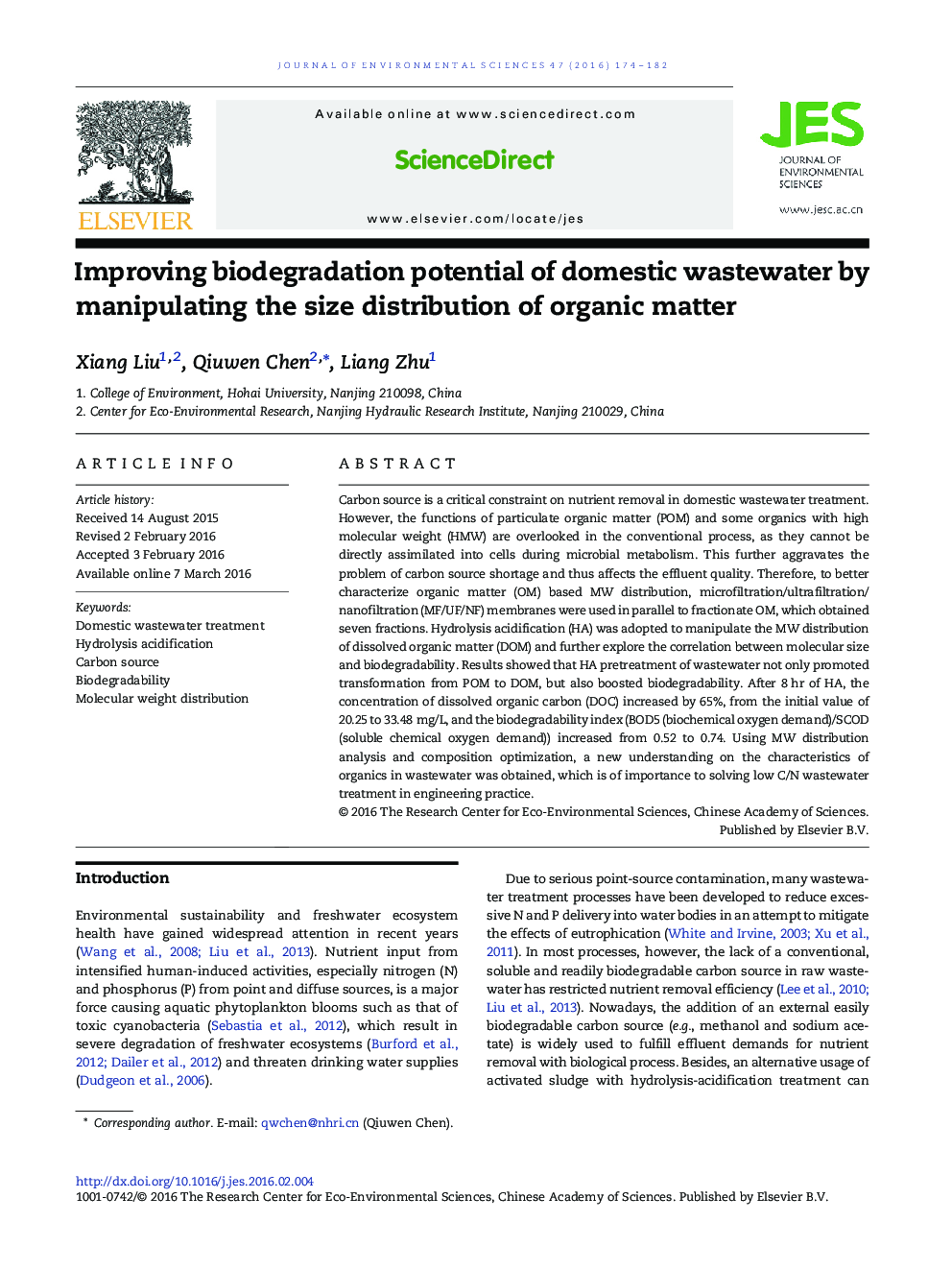| Article ID | Journal | Published Year | Pages | File Type |
|---|---|---|---|---|
| 4453612 | Journal of Environmental Sciences | 2016 | 9 Pages |
Carbon source is a critical constraint on nutrient removal in domestic wastewater treatment. However, the functions of particulate organic matter (POM) and some organics with high molecular weight (HMW) are overlooked in the conventional process, as they cannot be directly assimilated into cells during microbial metabolism. This further aggravates the problem of carbon source shortage and thus affects the effluent quality. Therefore, to better characterize organic matter (OM) based MW distribution, microfiltration/ultrafiltration/nanofiltration (MF/UF/NF) membranes were used in parallel to fractionate OM, which obtained seven fractions. Hydrolysis acidification (HA) was adopted to manipulate the MW distribution of dissolved organic matter (DOM) and further explore the correlation between molecular size and biodegradability. Results showed that HA pretreatment of wastewater not only promoted transformation from POM to DOM, but also boosted biodegradability. After 8 hr of HA, the concentration of dissolved organic carbon (DOC) increased by 65%, from the initial value of 20.25 to 33.48 mg/L, and the biodegradability index (BOD5 (biochemical oxygen demand)/SCOD (soluble chemical oxygen demand)) increased from 0.52 to 0.74. Using MW distribution analysis and composition optimization, a new understanding on the characteristics of organics in wastewater was obtained, which is of importance to solving low C/N wastewater treatment in engineering practice.
Graphical abstractFigure optionsDownload full-size imageDownload as PowerPoint slide
